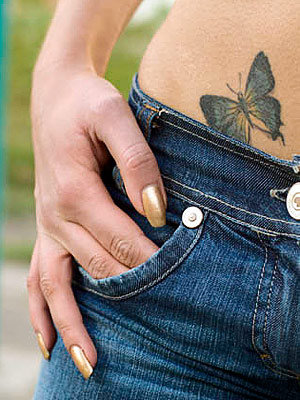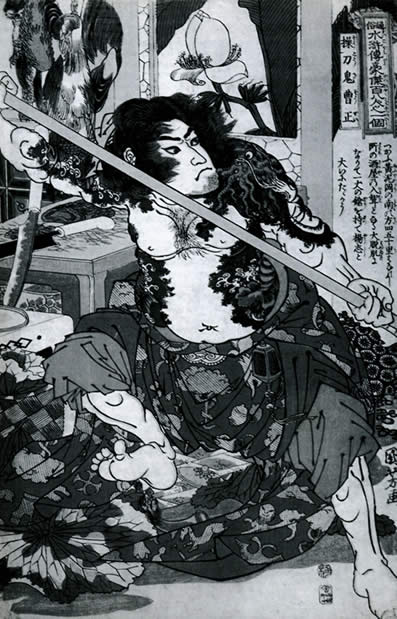




sexy girl tattoo hot girl tattoo hot tattoo for hot girl sexy tattoo for sexy girl girl dragon tattoo girl butterfly tattoo japanese girl tattoo chinese girl tattoo egyptian girl tattoo indian girl tattoo heyna tattoo flower tattoo



Why Must Japanese Tattoos
Why Must Japanese Tattoos? maybe this question often disturbs our brain who loves Japanese Tattoos, too much. Why must Japanese Tattoos? Because we love sushi and we want to show solidarity with our favorite itamae, or sushi chef. Or maybe we're a history buff and we want to join in with King George V, Winston Churchill's mother, King Oscar of Sweden, and Grand Duke Alexis of Russia, who were all known to sport a Japanese tattoo or two.
People also choose to adorn themselves with Japanese tattoos because they are enamored with the classic simplicity of the Japanese Kanji characters which can say so much in so little a space.

 Japanese lettering tattoos are some of the most popular and most common designs, featuring loops with no end that symbolize a never ending cycle of dying and rebirth. There are also animal tattoo designs as well, which are similar in design to the knot tattoos, although the cords in the design normally terminate in heads, tails, and feet. The lettering tattoos designs are normally never ending, unless an individual adds an end to symbolize a spiral.
Japanese lettering tattoos are some of the most popular and most common designs, featuring loops with no end that symbolize a never ending cycle of dying and rebirth. There are also animal tattoo designs as well, which are similar in design to the knot tattoos, although the cords in the design normally terminate in heads, tails, and feet. The lettering tattoos designs are normally never ending, unless an individual adds an end to symbolize a spiral.

By: Magnus Dahlquist
The recorded history of Japanese tattoos goes back to around 5000 B.C., and it's likely that Japanese people were drawing tattoos on each other even before then since early Japanese artifacts dating back earlier than those days include clay figurines with tattooed faces.
In the early days of the Japanese warrior clans, large and elaborate tattoos symbolized the warrior's ability to withstand pain. The larger and more intricate the Japanese tattoo was, the braver the warrior.
As warriors began to fall out of fashion, and the Japanese culture moved towards the arts, Japanese tattoos shifted to symbolize an appreciation for the finer things in life and were frequently associated with wealth and power.
Today, many Japanese people, as well as people from around the world, admire the beauty of Japanese tattoos and the skills of the artists who create them.
Source: EzineArticles.com
 By: Magnus Dahlquist
By: Magnus DahlquistUnlike the Chinese people, the Japanese people are currently very big on tattoos, but that was not always the case. In fact, for a brief time near the end of WW II, getting or giving a tattoo in Japan was actually illegal. The end of the war brought an end to that crime as well.
The alphabetic characters that appear in many Japanese tattoos are called Kanji. These characters, alone or in combination with others, can display a whole range of human emotions, thoughts, proverbs and poetry.
In addition to the calligraphic-like Kanji characters, there are many different animal, spiritual and nature-oriented symbols and images that make their way onto people's body parts in the form of a Japanese tattoo.
Irezumi, one of the more traditional Japanese tattoo styles depict dragons, koi and other symbols of Japanese culture and lifestyle. These types of Japanese tattoos are becoming increasingly popular with women who are having these sometimes intricate tattoo designs placed on their hips, back, ankles and arms. Even an occasional breast dragon has been spotted in the wild or during a wet T-shirt contest at some spring break bar in Florida or Mexico.
Magnus Dahlquist, has been in the tattooing business for the past decade. His knowledge and skills are well-known in the northern parts of Europe.Source: ezinearticles.com
Tattooing has been a Eurasian practice since Neolithic times. "Ötzi the Iceman", dated circa 3300 BC, bearing 57 tattoos: a cross on the inside of the left knee, six straight lines 15 centimeters long above the kidneys and numerous small parallel lines along the lumbar, legs and the ankles, exhibiting possible therapeutic tattoos (treatment of arthritis). Tarim Basin (West China, Xinjiang) revealed several tattooed mummies of a Western (Western Asian/European) physical type. Still relatively unknown (the only current publications in Western languages are those of J P. Mallory and V H. Mair, The Tarim Mummies, London, 2000), some of them could date from the end of the 2nd millennium BC.
One tattooed Mummy (c. 300 BC) was extracted from the permafrost of Altaï in the second half of the 15th century (the Man of Pazyryk, during the 1940s; one female mummy and one male in Ukok plateau, during the 1990s). Their tattooing involved animal designs carried out in a curvilinear style. The Man of Pazyryk, a Scythian chieftain, is tattooed with an extensive and detailed range of fish, monsters and a series of dots that lined up along the spinal column (lumbar region) and around the right ankle (illustrated at right).
Source: http://en.wikipedia.org